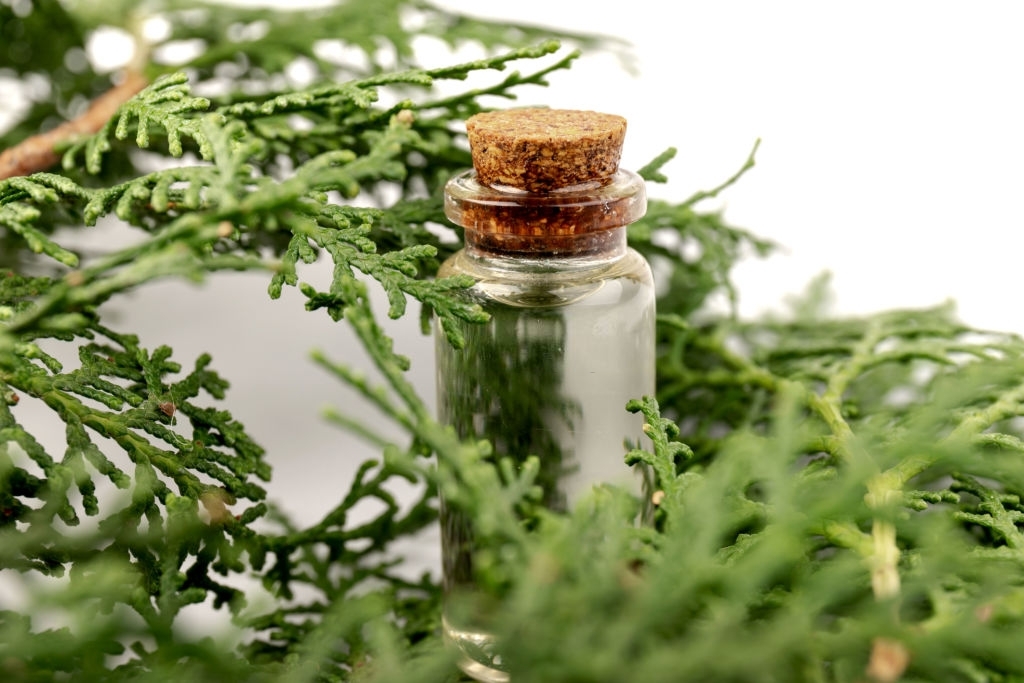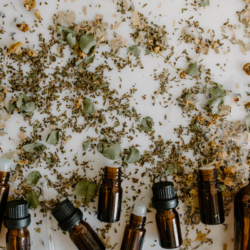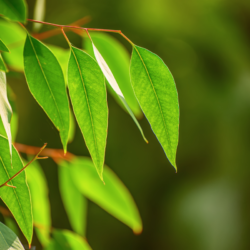Cypress was part of the medical material of the ancient Egyptians, as evidenced by various papyri. Its reddish yellow wood, practically incorruptible, was used to make sarcophagi to keep mummies. Tradition has often dedicated this tree to the cult of the dead and to the ornamentation of cemeteries because of its dark foliage and its eternally green color ( semper virens ).
However, in ancient China, the seeds of these conifers were attributed the power to provide longevity , the combustion of these same seeds helped to detect in the soil the veins of gold and jade, incorruptible substances, therefore immortal .
A little bit of mythology
Cyparissos de Keos lived with a tamed deer that he inadvertently wounded with a javelin. Inconsolable in the face of the animal’s death, wishing himself to die in turn, he was transformed into a cypress. Apollo addressed the man who had become a tree in these terms: “I will always cry for you, you will cry for others and you will join in their pain”.
If we stop there … Death, loss, sadness, melancholy. This is why the cypress is, with the yew and the ivy, a funeral tree host to cemeteries, a symbol of mourning and sorrow . But if we go further, beyond … Cyparissos must certainly have been a tree-god whose sacred animal, the deer, is the symbol of the perpetual rebirth of life (deer antlers, although they fall every year, always grow back, and bigger…). To unite, in a single myth, two emblems, one plant, the other animal, both possessing an identical semantic scope, isn’t this a way of accounting for the fact that if the cypress embodies the idea of mortality and finitude, it is just as a bearer of immortality?
Arrow of Eros or Scepter of Zeus , the cypress is indeed very present in mythology. In Greece, there were a number of sacred groves made up of cypress trees, near temples dedicated to different divinities: Apollo, Hermes, Rhea, Lais, Bellerophon, or even Asclepius.
But it is especially as a symbol of infernal or “dark” divinities that the cypress is known. We sometimes quote Chronos or Beroth , Cypriot chthonian goddess, but, above all, it is inevitably Hades among the Greeks, Pluto among the Romans, who sees his priests crowned with cypress branches.
A little history
The Assyrians made medical use of the cypress they gave “to remedy the itching of the foundation”, which is, as we know today, one of its major uses, namely the adjuvant treatment against hemorrhoids ! This use is also recommended in Greek medicine by Hippocrates (4th century BC).
Ignored by Hildegarde (she only advises cypress in the face of diarrhea and to correct the body from its general weakness), the anti-hemorrhoidal property of cypress reappears in other major works of the Middle Ages: the Circa instans , the Hortus sanitatis , especially the Arbolayre (first herbarium printed in France in 1486), which advises an aqueous decoction of leaves and cypress galbulus against the hemorrhoids fluent. Adding cypress powder to food is also very beneficial against this ailment, since “it goes a long way”.
Valnet (twentieth century), meanwhile, recommends it in circulatory disorders , the ovarian disorders such as dysmenorrhea, bleeding rules or menopause , and infections such as whooping cough or flu.
What are the pharmacological properties of the essential oil of leafy twigs of cypress ?
Expectorant property:
The essential oil is expectorant because the α-pinene it contains reduces bronchial secretions .
Venous and lymphatic tonic property:
Unlike essential oil of cedar, cypress has demonstrated its venous and lymphatic decongestant properties through its vasoconstrictor and healing qualities. The cypress also restores the elasticity of the venous wall by lymphatic and prostate decongestion.
Antimicrobial property:
The effect antibacterial cypress has been demonstrated in vitro vis-à-vis of Staphylococcus aureus, of Escherichia coli, of Proteus mirablis, of Pseudomonas aeruginosa, of Klebsiella pneumoniae and Mycobacterium tuberculosis ; antiviral demonstrated in vitro against Candida albicans and dermatophytes.
Estrogenic property:
The essential oil of evergreen cypress is estrogen-like by the cedrol it contains.
Other properties:
- Neurotonic, rebalancing of the central nervous system
- Antitussive, mucolytic, antispasmodic pƩ- (large asthma plant)
- Immunostimulant
- Slight emmenagogue, nervous rebalancing, sweat regulator
- Anti-inflammatory of veins and lymphatic vessels
- Cortison-like, stimulant of the pituitary-adrenal cortex, useful in prolonged inflammatory states
Does cypress essential oil require precautions for use?
- Estrogen-like, caution in hormone-dependent pathologies, do not combine with estrogen therapy (including estrogen-progestogen)
- Contraindicated in pregnant or breastfeeding women
- Contraindicated in people with a history of epilepsy
- Reserved for adults or pubescent adolescents
- Avoid in prolonged use
- External use only recommended
- Forbidden for internal use
- Do not swallow
- Do not diffuse, inhale, or put in the bath water
- Cytochrome P450 inhibitor, risk of drug interactions, ask your pharmacist for advice
- Avoid in combination with cortisone , risk of drug interaction
- Pure dermocausticity; repellent action on the skin in a pure state and aggressive for the mucous membranes (redness, irritation, pruritus), dilution required
- Authorized in animals
Medical bibliographic sources and clinical trials :
- Al-Snafi, AE (2016). Medical importance of Cupressus sempervirens-A review. IOSR Journal of Pharmacy
- Khadidja Mazari, Nassima Bendimerad, Chahrazed Bekhechi, Xavier Fernandez. Chemical composition and antimicrobial activity of essential oils isolated from Algerian Juniperus phoenicea L. and Cupressus sempervirens L. Journal of Medicinal Plants Research, 2010
- Selim SA, Adam ME, Hassan SM, Albalawi AR. Chemical composition, antimicrobial and antibiofilm activity of the essential oil and methanol extract of the Mediterranean cypress (Cupressus sempervirens L.). BMC Complement Altern Med. 2014
- Aicha Ben Nouri, Wissal Dhifi, Sana Bellili, Hanene Ghazghazi, Chedia Aouadhi, Ameur Chérif, Mohamed Hammami, Wissem Mnif. Chemical Composition, Antioxidant Potential, and Antibacterial Activity of Essential Oil Cones of Tunisian Cupressus sempervirens. Journal of Chemistry, Volume 2015
- Boukhris, M., Regane, G., Yangui, T., Sayadi, S., & Bouaziz, M. (2012). Chemical composition and biological potential of essential oil from Tunisian Cupressus sempervirens L. Journal of Arid Land Studies





